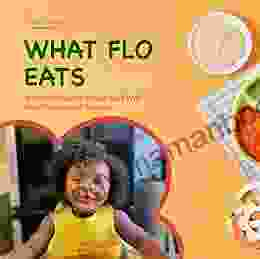Chicano Education in the Era of Segregation: Al Filo

The history of Chicano education in the United States is a complex and challenging one. Mexican Americans have faced discrimination and segregation in schools for centuries, and they continue to face many of the same challenges today. However, the Chicano movement has also made significant progress in improving educational opportunities for Mexican Americans.
The Era of Segregation
The era of segregation in education began in the late 1800s, when many states passed laws requiring the separation of Mexican American students from white students. These laws were based on the racist belief that Mexican Americans were inferior to whites. As a result of these laws, Mexican American students were often forced to attend segregated schools that were poorly funded and had few resources.
4.7 out of 5
| Language | : | English |
| File size | : | 949 KB |
| Text-to-Speech | : | Enabled |
| Screen Reader | : | Supported |
| Enhanced typesetting | : | Enabled |
| Word Wise | : | Enabled |
| Print length | : | 335 pages |
| X-Ray for textbooks | : | Enabled |
The segregation of Mexican American students had a devastating impact on their education. They were often denied access to basic educational opportunities, and they were often taught in a way that reinforced their subordinate status. As a result, many Mexican American students dropped out of school or failed to graduate.
The Chicano Movement
The Chicano movement emerged in the 1960s as a response to the discrimination and oppression faced by Mexican Americans. The movement fought for a variety of civil rights, including the right to quality education. One of the most important victories of the Chicano movement was the passage of the Bilingual Education Act of 1968. This law required schools to provide bilingual education programs for students who were not fluent in English.
The Bilingual Education Act was a major step forward in improving educational opportunities for Mexican American students. It allowed them to learn in their native language while also developing their English skills. As a result, more Mexican American students were able to graduate from high school and go on to college.
Al Filo
Al Filo is a documentary film that tells the story of Chicano education in the era of segregation. The film follows the lives of several Mexican American students who attended segregated schools in the 1950s and 1960s. The film shows the challenges that these students faced, as well as the resilience and determination that they showed in overcoming them.
Al Filo is an important film because it sheds light on a forgotten chapter in American history. The film shows the devastating impact of segregation on Mexican American students, and it also shows the power of the Chicano movement to make a difference.
The history of Chicano education in the United States is a complex and challenging one. Mexican Americans have faced discrimination and segregation for centuries, but they have also made significant progress in improving educational opportunities for their children. The Chicano movement has played a vital role in this progress, and it continues to fight for the rights of Mexican Americans today.
4.7 out of 5
| Language | : | English |
| File size | : | 949 KB |
| Text-to-Speech | : | Enabled |
| Screen Reader | : | Supported |
| Enhanced typesetting | : | Enabled |
| Word Wise | : | Enabled |
| Print length | : | 335 pages |
| X-Ray for textbooks | : | Enabled |
Do you want to contribute by writing guest posts on this blog?
Please contact us and send us a resume of previous articles that you have written.
 Top Book
Top Book Novel
Novel Fiction
Fiction Nonfiction
Nonfiction Literature
Literature Paperback
Paperback Hardcover
Hardcover E-book
E-book Audiobook
Audiobook Bestseller
Bestseller Classic
Classic Mystery
Mystery Thriller
Thriller Romance
Romance Fantasy
Fantasy Science Fiction
Science Fiction Biography
Biography Memoir
Memoir Autobiography
Autobiography Poetry
Poetry Drama
Drama Historical Fiction
Historical Fiction Self-help
Self-help Young Adult
Young Adult Childrens Books
Childrens Books Graphic Novel
Graphic Novel Anthology
Anthology Series
Series Encyclopedia
Encyclopedia Reference
Reference Guidebook
Guidebook Textbook
Textbook Workbook
Workbook Journal
Journal Diary
Diary Manuscript
Manuscript Folio
Folio Pulp Fiction
Pulp Fiction Short Stories
Short Stories Fairy Tales
Fairy Tales Fables
Fables Mythology
Mythology Philosophy
Philosophy Religion
Religion Spirituality
Spirituality Essays
Essays Critique
Critique Commentary
Commentary Glossary
Glossary Bibliography
Bibliography Index
Index Table of Contents
Table of Contents Preface
Preface Introduction
Introduction Foreword
Foreword Afterword
Afterword Appendices
Appendices Annotations
Annotations Footnotes
Footnotes Epilogue
Epilogue Prologue
Prologue Brad W King
Brad W King John Muir
John Muir Casey Hill
Casey Hill Sue Veryser
Sue Veryser Nina Raine
Nina Raine Peter C Brown
Peter C Brown Robert Bryndza
Robert Bryndza Kelly Cibrian
Kelly Cibrian Alicja Urbanowicz
Alicja Urbanowicz Freeman Wills Crofts
Freeman Wills Crofts Dawn Lee Garzon Maaks
Dawn Lee Garzon Maaks Jlh Tavares
Jlh Tavares Ricardo Stern
Ricardo Stern Peter Hathaway Capstick
Peter Hathaway Capstick Pere Gimferrer
Pere Gimferrer Leotie Hicks
Leotie Hicks Kathy Seaman Shaw
Kathy Seaman Shaw Alta Graham
Alta Graham Vinay Singh
Vinay Singh Erin R Flynn
Erin R Flynn
Light bulbAdvertise smarter! Our strategic ad space ensures maximum exposure. Reserve your spot today!

 Gabriel Garcia MarquezStop Smoking, Drug Use, Overeating, and More Today: Reclaiming Your Health...
Gabriel Garcia MarquezStop Smoking, Drug Use, Overeating, and More Today: Reclaiming Your Health... Carlos FuentesFollow ·16.3k
Carlos FuentesFollow ·16.3k Gene SimmonsFollow ·12.6k
Gene SimmonsFollow ·12.6k Houston PowellFollow ·14.2k
Houston PowellFollow ·14.2k Bernard PowellFollow ·9.4k
Bernard PowellFollow ·9.4k Griffin MitchellFollow ·18.8k
Griffin MitchellFollow ·18.8k Roland HayesFollow ·12.3k
Roland HayesFollow ·12.3k Emmett MitchellFollow ·12.3k
Emmett MitchellFollow ·12.3k Beau CarterFollow ·3.7k
Beau CarterFollow ·3.7k

 Vernon Blair
Vernon BlairThe Woman I Met in My Dream: An Unforgettable Night of...
As the veil of night...

 Carlos Fuentes
Carlos FuentesThe Ultimate Guide to Healthy Eating for Toddlers: Meal...
As a parent of a...

 Peter Carter
Peter CarterInside My Autistic Mind: A Journey of Self-Discovery and...
Autism spectrum disorder (ASD) is a...

 Isaac Asimov
Isaac AsimovA Journey Through Jane Austen's Literary Masterpieces:...
Jane Austen, the renowned English...

 Hank Mitchell
Hank MitchellAdvancements in Textiles: Science and Technology by...
The textile...

 Troy Simmons
Troy SimmonsRecovery Road: An Odyssey of Hope and Redemption by...
Recovery Road is a...
4.7 out of 5
| Language | : | English |
| File size | : | 949 KB |
| Text-to-Speech | : | Enabled |
| Screen Reader | : | Supported |
| Enhanced typesetting | : | Enabled |
| Word Wise | : | Enabled |
| Print length | : | 335 pages |
| X-Ray for textbooks | : | Enabled |










